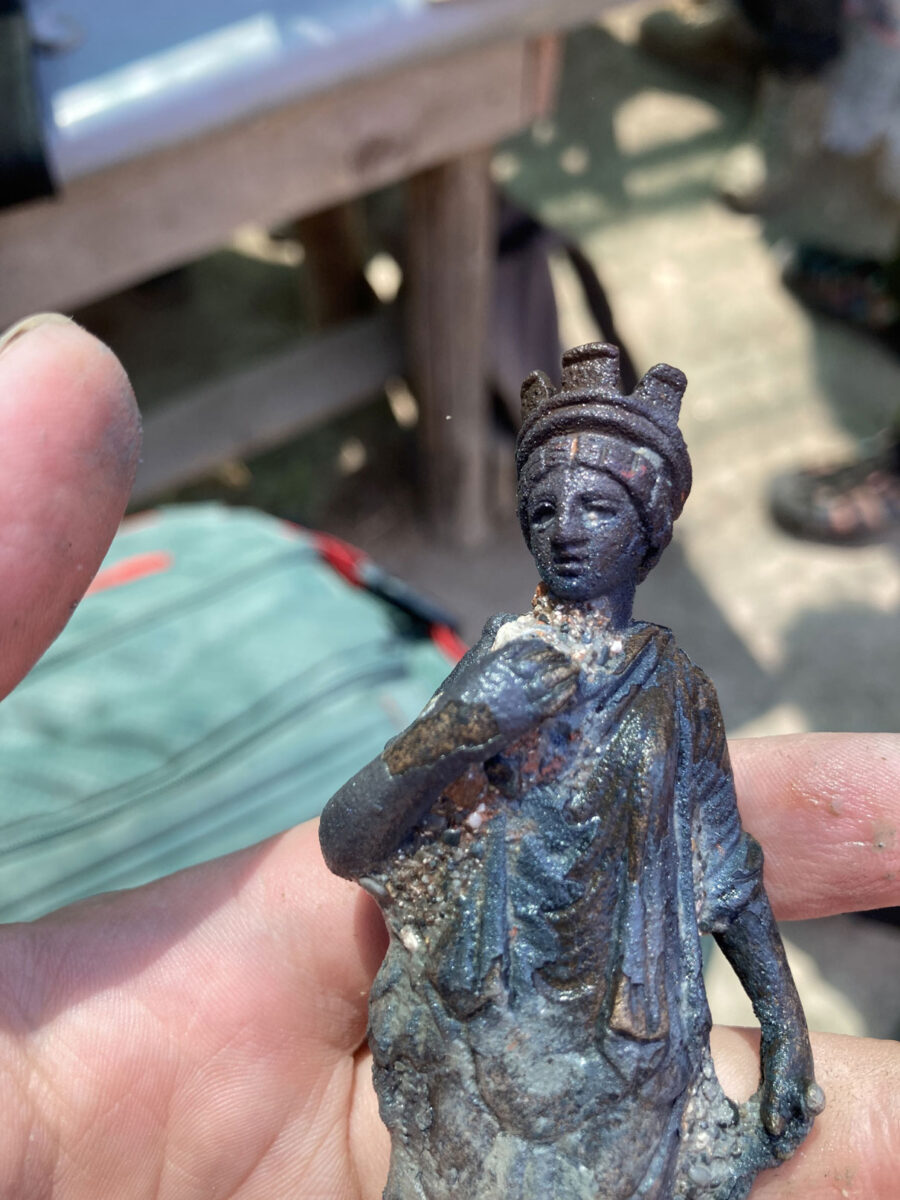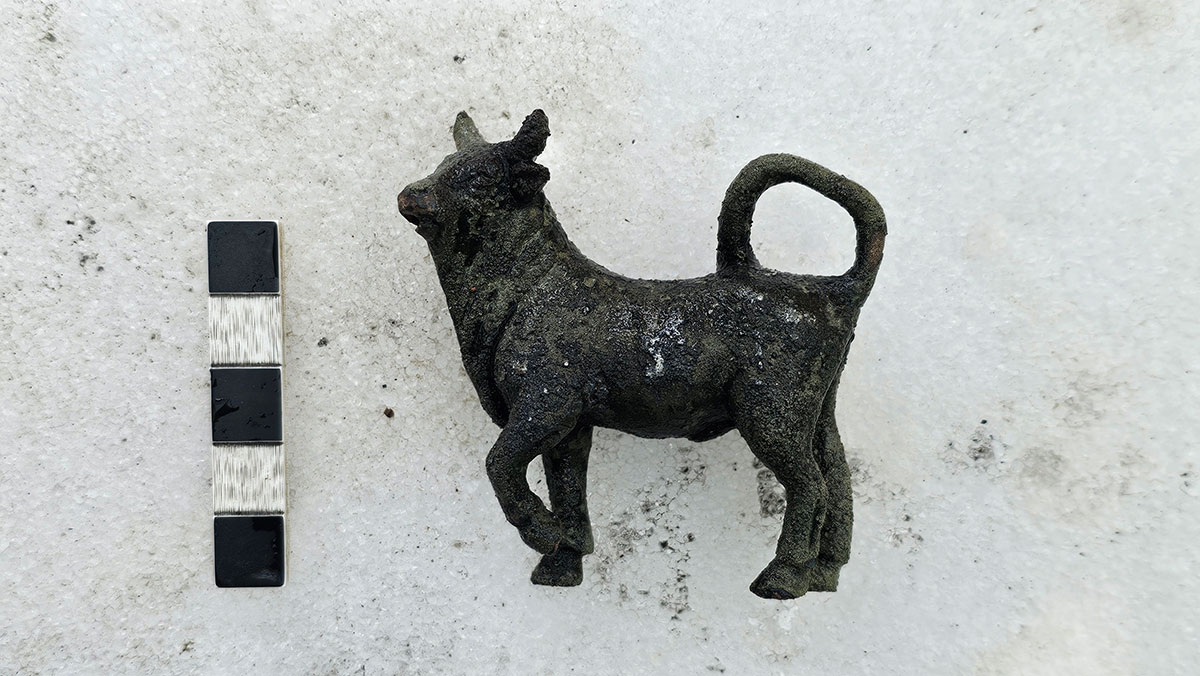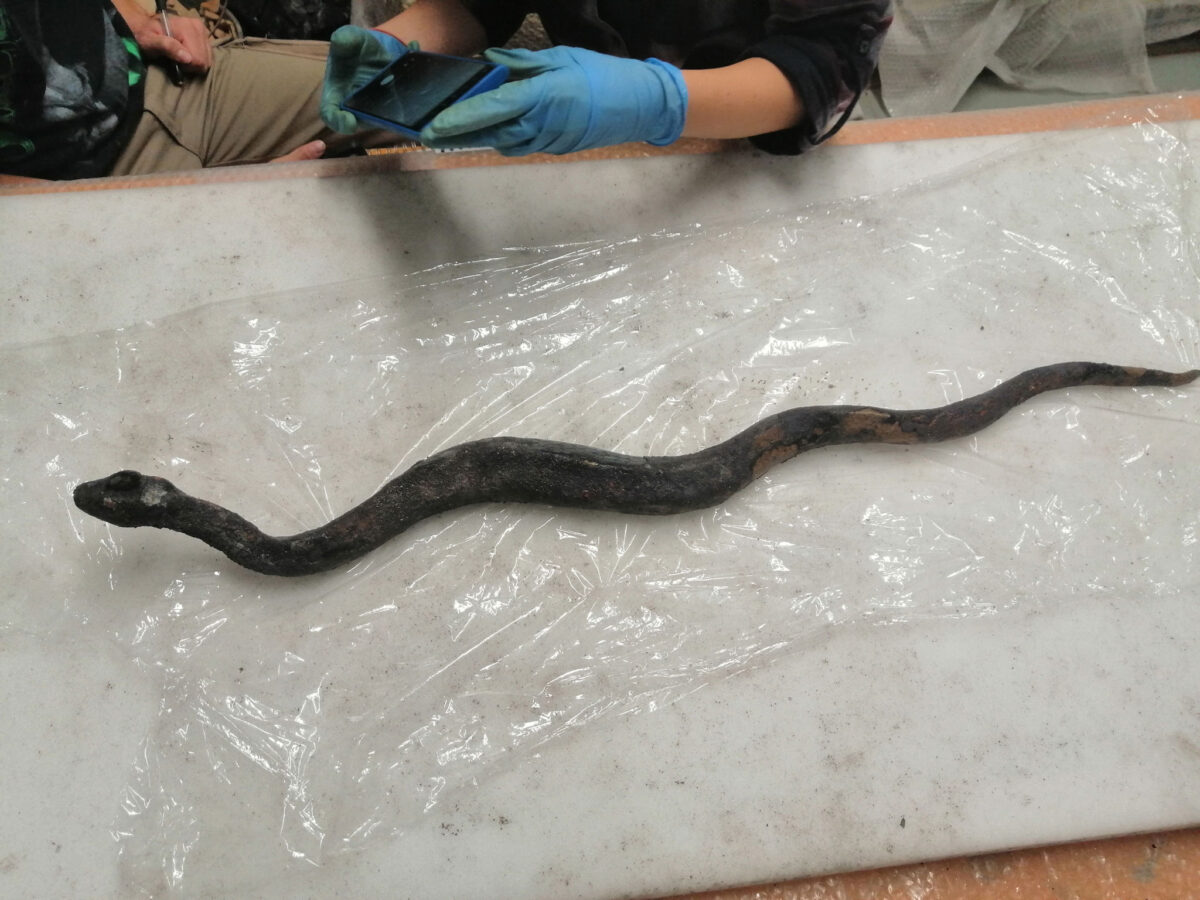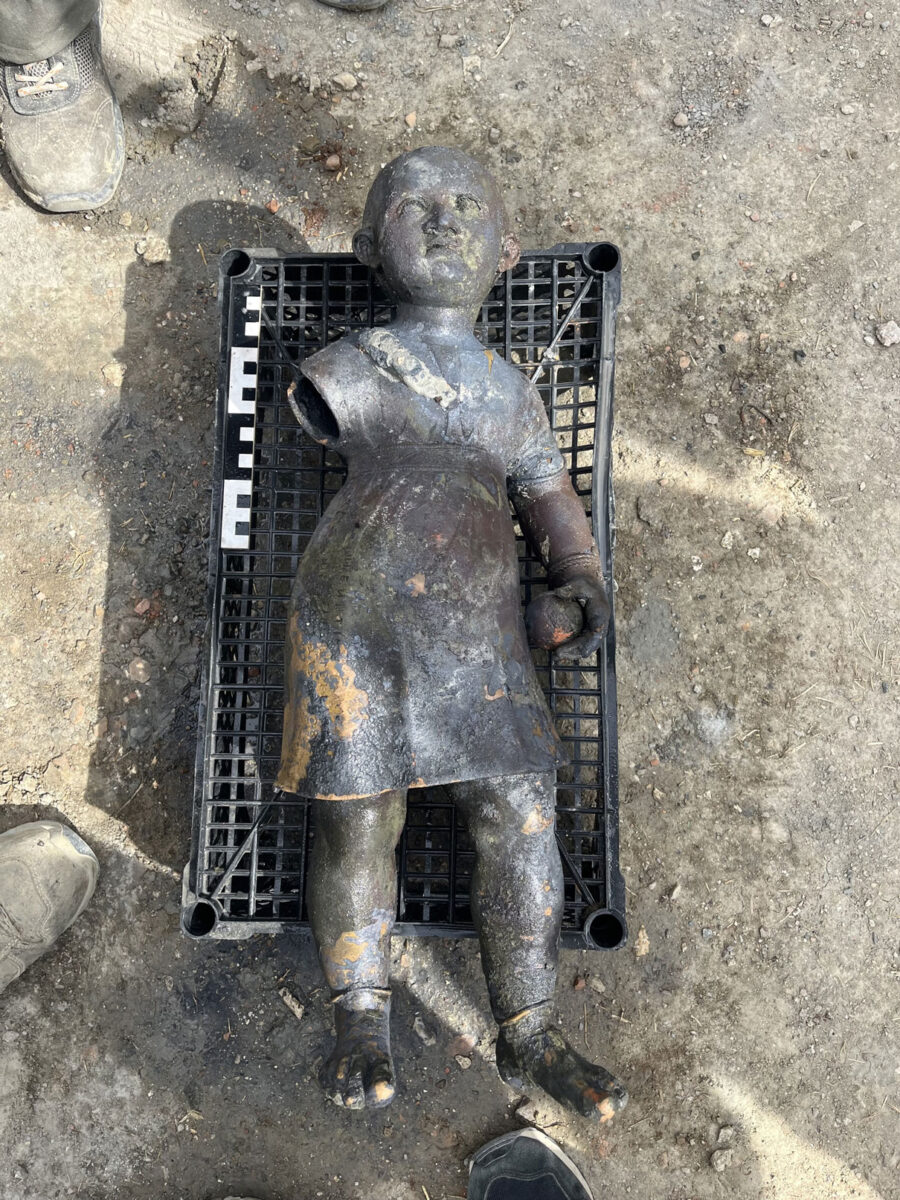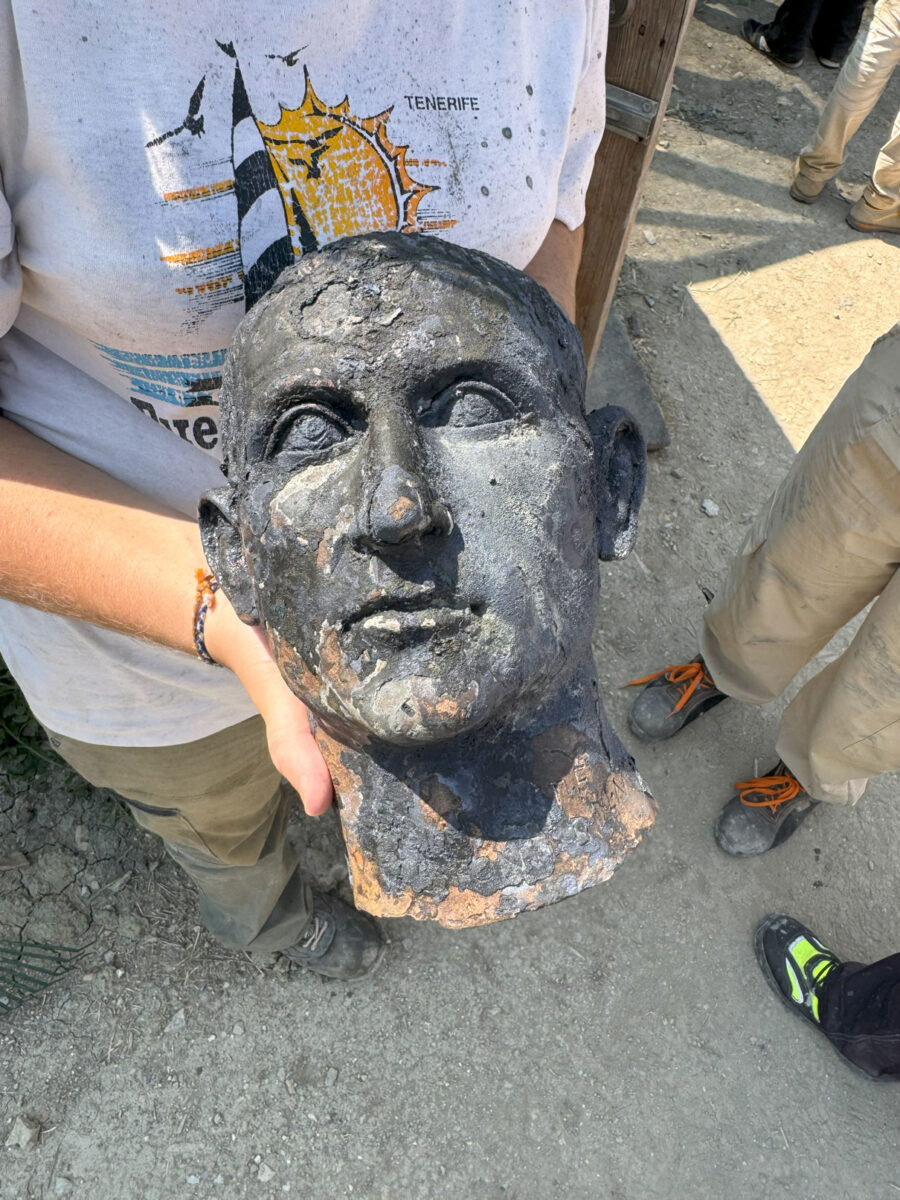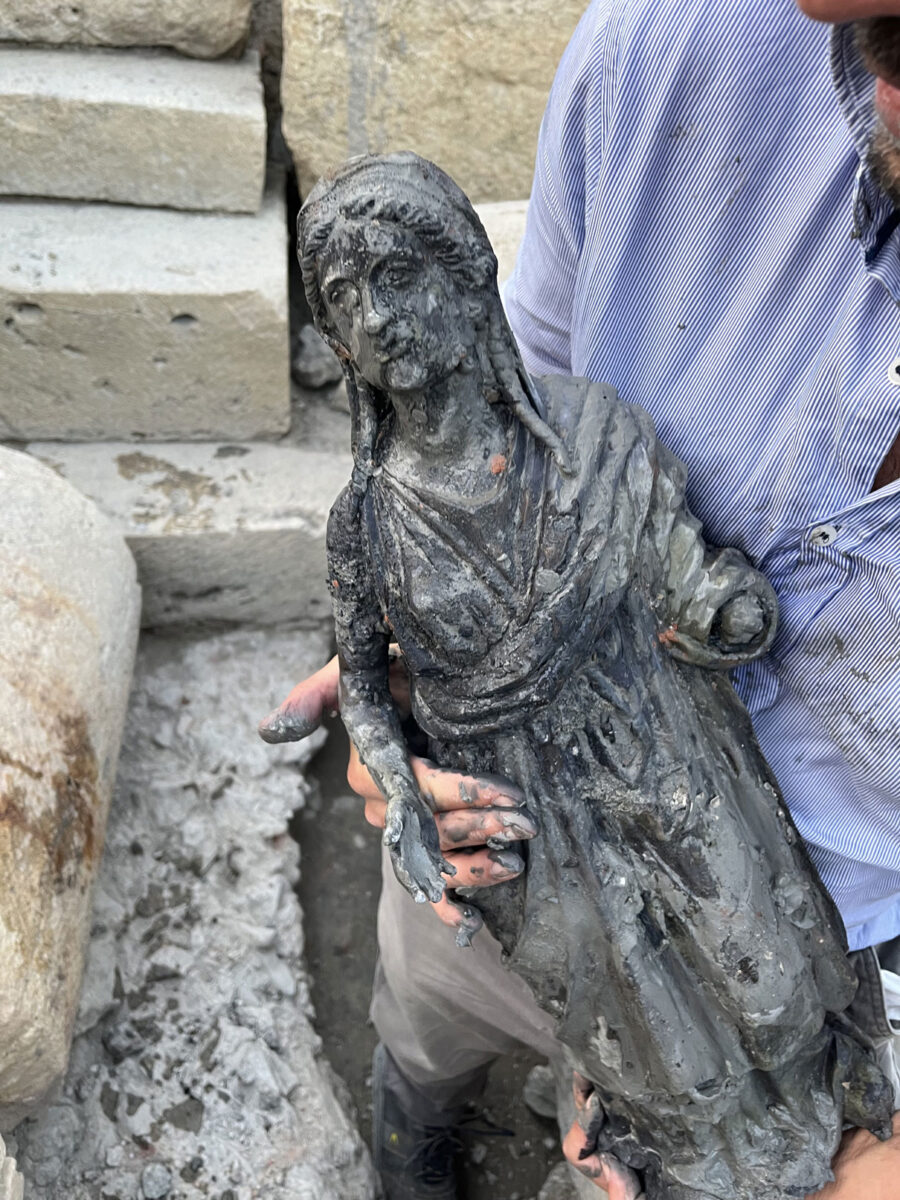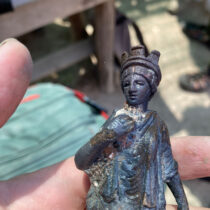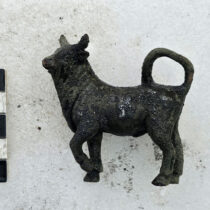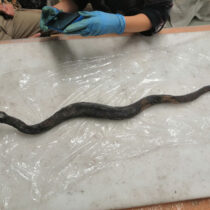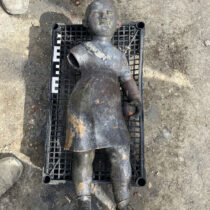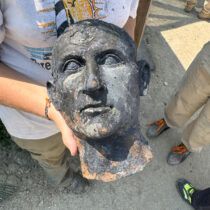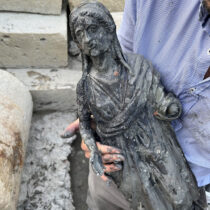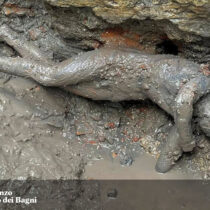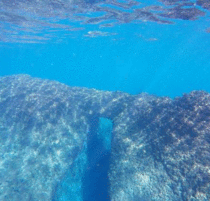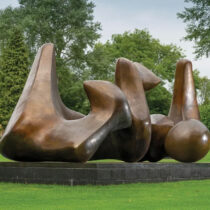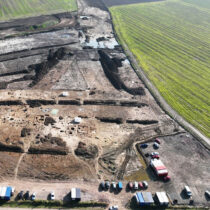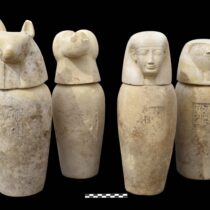An impressive group of finds, among them bronze statues, a coin hoard and tablets, have been revealed during the latest excavation season (2024) at San Casciano dei Bagni, in Siena, Italy. The site’s area of Bagno Grande, which was the focus of this year’s work, hosts the remains of a sanctuary that flourished under the Etruscans and Romans.
According to the press release by the Italian Ministry of Culture, “the extension of the area of excavation at the sanctuary of Bagno Grande has revealed, between June and October, the discovery of the temenos, the sacred space’s encircling wall, which included more buildings, among which the temple overlooking a huge sacred basin. Another, more ancient building, possibly a big fence made of travertine, surrounded the Bagno Grande’s spring already since the Etruscan era, defining the sacred space at least since the 3rd c. BCE. The excavation has now brought to light a large part of the earliest basin, which was restored between the reign of emperors Tiberius and Claudius, possibly following a miracle associated with the strike of a thunder”.
It is reported that an array of finds associated with cultic and votive activity is known from around the basin, while the pool itself had been found to contain large numbers of impressive objects across a clear stratigraphy. This year, archaeologists have reached new stratigraphic sequences, following a complex work of managing the water coming from the spring. Regarding the finds, the press release reports that “offerings made of precious metal characterize the votive offerings’ deposit. Four new statues and then votive arms, heads and inscribed legs, together with ritual instruments, such as an elegant lamp, or a
small bronze bull, recall that the agro-pastoral world was so important in this context and already represented by the bas-relief inside the sacred basin. Again coins from the Republican and Imperial ages, now more than 10,000, have been found in the sanctuary of the Bagno Grande. But next to the bronzes, the discovery of a crown and a gold ring is associated with the multiplication of Roman aurei. Precious metals, together with gems, amber and other jewels, link the gift for the therapeutic properties of the hot waters to the divinatory practices that certainly had their fulcrum in the sanctuary”.
Regarding the most impressive objects, “an exceptional male nude body is offered exactly in half, as if divided from the neck to the genitals by a surgical cut. Dedicated by a Gaius Roscius to the thermal springs, this half body possibly recalls the healing of the part rendered in bronze. A child augur, a small priest from the end of the 2nd century BCE, with a long inscription in Etruscan on his right leg, holds a ball in his left
hand, with the classic pentagons on it: possibly a divinatory element, to be rotated in a ritual. The gesture of adoration is rendered by a female statue, almost identical to the one found in 2022, with elegant braids falling on the chest and placed on one side.”
Epigraphic material includes inscriptions in Latin and Etruscan, referring to the Etruscan name of Chiusi (Cleusi), next to dedications to the Nymphs and to the Fonte Calda or Flere Havens in Etruscan, Fortuna and the spirit of the Emperor.
The excavation of the Bagno Grande in San Casciano dei Bagni is an excavation concession granted to the Municipality of San Casciano dei Bagni by the General Directorate of Archaeology, Fine Arts and Landscape and was created in collaboration with the ABAP Superintendency for the provinces of Siena, Grosseto and Arezzo and the scientific coordination of the University for Foreigners of Siena. More than 80 archaeology students from universities around the world took part in the 2024 excavation campaign, while the interdisciplinary and international research and study group involves over 90 specialists from various disciplines.
Translated by Georgia Xekalaki
